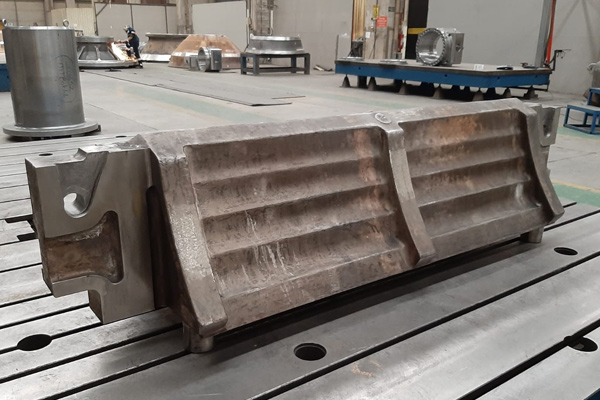The advantage of foundry chromite sand for manganese casting steel
Manganese casting steel is a superior casting for heavy mechainary parts,mining equipment, such as crusher jaws, hammerheads in impact crushers, and liners for ball mills. The manganese castings are always heavy and with large size. It’s important to adopt proper foundry sand for the casting process. Foundry chromite sand is particularly proper casting sand for it. There are several advantages:
1. High refractoriness
Chromite sand has a high melting point, typically around 1900 – 2050 °C. Manganese steel usually has a relatively high pouring temperature. The high refractoriness of chromite sand ensures that it can withstand the high – temperature molten manganese steel without melting or deforming during the casting process. This helps to maintain the integrity of the mold cavity and ensures the accurate formation of the casting shape.
2. Good thermal conductivity
Chromite sand has better thermal conductivity compared to some other common foundry sands. In manganese steel casting, rapid and uniform heat dissipation is crucial. The good thermal conductivity of chromite sand allows the molten manganese steel to cool down at a proper rate. This helps to reduce the occurrence of thermal stress and hot – tearing defects in the casting, improving the internal quality and mechanical properties of the manganese steel casting.
3. Chemical stability
Chromite sand is chemically stable and does not react easily with the molten manganese steel. Manganese steel may contain various alloying elements, and during the casting process, there is a potential for chemical reactions between the sand and the molten metal. The chemical stability of chromite sand prevents such reactions, which could otherwise lead to the formation of inclusions, surface defects, or changes in the chemical composition of the casting, thus ensuring the purity and quality of the manganese steel casting.
4. Anti – sticking property
It has excellent anti – sticking characteristics. When the molten manganese steel solidifies in the mold made of chromite sand, it is less likely to stick to the sand particles. This makes it easier to remove the casting from the mold after solidification, reducing the surface roughness and improving the surface finish of the casting. It also reduces the need for excessive cleaning and finishing operations, saving time and cost in the post – casting process.
5. Low expansion coefficient
Chromite sand has a relatively low thermal expansion coefficient. During the heating and cooling cycles in the casting process, the low expansion coefficient helps to minimize the dimensional changes of the mold. This is important for maintaining the dimensional accuracy of the manganese steel casting, especially for parts with tight tolerance requirements.
















